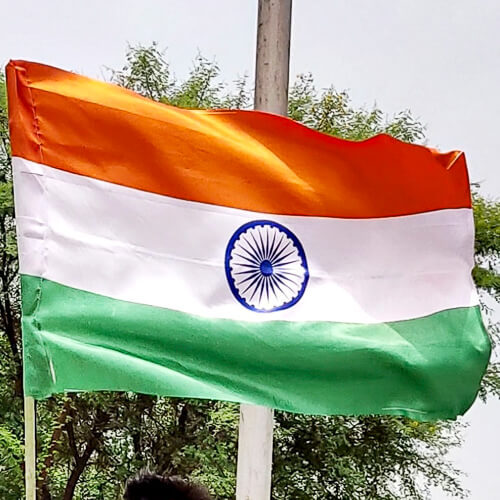
Open radio access network (RAN) proponents, particularly in the US, are hoping that a broad move to 5G in India will help create opportunities for open RAN technology to proliferate globally. But that likely won't happen anytime soon, according to some industry observers, and others don't think it will ever happen on a major scale.
"This will not change anything," said John Strand, CEO of an advisory company called Strand Consult. He argued that open RAN is something that big, established telecom companies talk about but don't actually buy. His company forecasts that open RAN will sit atop less than 3% of all 5G sites in 2030.
But equipment vendors and other open RAN proponents disagree with Strand's pessimistic assessment of the technology's potential.
India's move to 5G is a "game changer" for open RAN, wrote Pardeep Kohli, president of open RAN vendor Mavenir, in a recent LinkedIn post. "There will be new entrants in the market. Open RAN architecture provides opportunity for new players to enter the market."
Mavenir has made no secret of its interest in the massive Indian telecom market, which is working to foster domestic 5G suppliers via its "Make in India" program. "While we are headquartered in the US, we make huge investments in India, and are doing most of our work out of here, which no other Indian company is doing. We are as good Indians as anybody else," Kohli told ETTelecom in a recent interview.
Similarly, the Open RAN Policy Coalition – a US-based lobbying group with a wide range of big-name members – is also optimistic about open RAN in India.
"Open RAN is a win-win for India and for the global open RAN ecosystem. A move to open and interoperable network architectures will help drive the adoption of trusted vendors in India, create opportunities for Indian vendors, and potentially reduce the digital divide through lower cost and higher flexibility solutions," wrote Alex Botting, the coalition's director of international programs, in response to questions from Light Reading. "At the same time, meeting the scale of infrastructure needs in India would provide a significant boost to global investment in open RAN R&D."
Botting notes that the coalition has had "positive engagement" with the government in India. "There is a real opportunity for government and industry to continue to work together to identify opportunities for collaboration on the scalability and security of open, standards-based technology in the region," he said.
Relying on classic RAN
Still, some analysts believe that traditional, classic RAN will dominate the Indian 5G sector for the foreseeable future.
"At Omdia, we do not expect open RAN will be the dominant model in India in the short term, but we expect to see more open RAN deployments in India in the next few years, involving both Indian vendors and foreign vendors," wrote analyst Remy Pascal in response to questions from Light Reading. Omdia and Light Reading are owned by the same parent company, Informa.
Dell'Oro Group analyst Stefan Pongratz agreed. "While the pie is sizable enough for multiple players and architectures, my initial impression is that the traditional more established RAN vendors are probably picking up a bit more business than some had expected since India's later 5G migration was often viewed as a good entry point for the smaller RAN suppliers," he wrote to Light Reading.
Figure 1:  (Source: rahul jarwal on Unsplash)
(Source: rahul jarwal on Unsplash)
Indeed, early 5G contracts in India – made immediately following the country's first big 5G spectrum auction – have heavily favored classic RAN vendors like Ericsson, Nokia and Samsung.
For example, Airtel – the auction's second biggest winner – is sticking with its 4G vendors, Ericsson and Nokia, while introducing Samsung as a third supplier. That's noteworthy considering Airtel has in the past suggested a preference for open RAN in 5G.
Reliance Jio, the biggest spender in India's recent 5G spectrum auction, has not yet named its 5G vendors, but reports in the Indian press indicate it has chosen the same three suppliers as Airtel after also signaling an interest in open RAN.
Vodafone Idea and Adani Group – coming in third and fourth in the auction, respectively – have not announced their 5G vendors yet either. But Vodafone Idea is expected to team with Ericsson and Nokia, despite working with Mavenir on open RAN. Adani Group, meanwhile, is expected to focus on building private 5G networks for its ports and other businesses.
Finally, there's publicly owned BSNL, which is still working on its 4G launch. Omdia's Pascal suggested that the company could carve out some role for Indian vendors but may also continue to work with traditional, Western vendors.
The Chinese factor
Two major factors have driven excitement around open RAN in India. One is that the country's government released 5G spectrum relatively recently, giving open RAN vendors time to develop products for the market. The second is that Chinese vendors like Huawei and ZTE have been excluded from the market.
That latter development has certainly satisfied policymakers in the US and elsewhere who see such vendors as a threat to security. More broadly, Huawei and ZTE represent China's technological advancements amid its broader rise on the world stage.
Those issues were on clear display during a recent meeting between US President Biden and Saudi Arabian officials.
"Saudi Arabia will invest in new US-led technology to develop and secure reliable 5G and 6G networks, both here and in the future, in developing countries to coordinate with the Partnership for Global Initiative – the Global Infrastructure and Investment, which I put together at the G7," Biden said, according to a White House transcript. "This new technology solution for 5G, called open RAN, will outcompete other platforms, including from China."
Biden also recently signed legislation that will allocate fully $1.5 billion to foster open RAN in the US. US-based makers of 5G equipment, like JMA Wireless, have cheered that move.
However, the removal of Chinese vendors from a market doesn't necessarily open the door to open RAN. For example, the FCC's ongoing "rip and replace" program in the US is designed to remove Huawei and ZTE equipment from US networks. And though open RAN equipment is touted as a cheaper replacement option, most US operators in the program appear to prefer traditional vendors.
Incumbent trepidation
The hesitation among big Indian operators to pull the trigger on open RAN is not surprising. The big 5G operators in the US are taking the same stance.
Both AT&T and Verizon are engaged in massive 5G network buildouts with their own new midband spectrum holdings, and each has signaled interest in open RAN. However, neither company has announced firm open RAN deployment targets, and both are relying on standard, traditional vendors like Ericsson, Nokia and Samsung.
T-Mobile in the US continues to hint at concerns about open RAN. For example, T-Mobile's Mark McDiarmid, SVP of Radio Network Engineering and Development, recently took to LinkedIn to reiterate questions about how intellectual property rights might be handled in an open RAN deployment.
McDiarmid's post echoes comments T-Mobile's networking chief Neville Ray made in 2020. "O-RAN for me is interesting at this point in time, but there's a host of unanswered questions around IP [intellectual property], around R&D, around system integration," he said.
Gabriel Brown, a principal analyst with Heavy Reading (a sister company to Light Reading), said it makes sense for big operators to prefer traditional vendors. "These are deployable systems that work very well and, especially relevant to India, are now in the high volume manufacturing phase," he wrote in response to questions from Light Reading.
But he added: "I don't think this closes the door on open RAN in India. It is a huge market with many opportunities to use open RAN in the 5G deployment. It may be a question of leading with tried and tested solutions and looking to use open RAN where they can."
Related posts:
— Mike Dano, Editorial Director, 5G & Mobile Strategies, Light Reading | @mikeddano
About the Author(s)
You May Also Like












